Battle of Nations Monument
An Interesting History-and sight in Leipzig is the Battle of Nation Monument, which has been constructed in memory on the "battle of nations" on the 16th to the 19th of October 1813 . In this Battle the forces of the allies, Austria, Prussia, Russia and Sweden fought against the troops of Napoleon Bonaparte.
With up to 600,000 soldiers involved in over a dozen nations that fight was to the beginning of the 20th Century, probably the biggest battle in world history. In this most important battle of the war of liberation against Napoleonic domination brought the numerically superior allied armies of the Austrians, Prussians, Russians and Swedes, Napoleon Bonaparte at the decisive defeat which forced him to deal with remainders army and withdraw without allies from Germany.
In the year 1913 - exactly 100 years later they have finished the construction of the 91 meter monument ("Battle of Nations Monument") in order to remind the people what happened and in memory of the soldiers who had died ( approx. 90.000 soldiers dead or wounded). The location of the monument is on that place where the heaviest fights were and the most soldiers died.
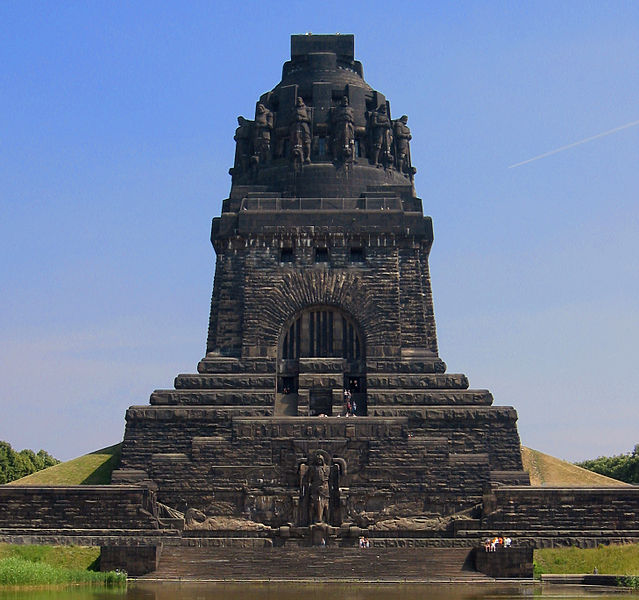
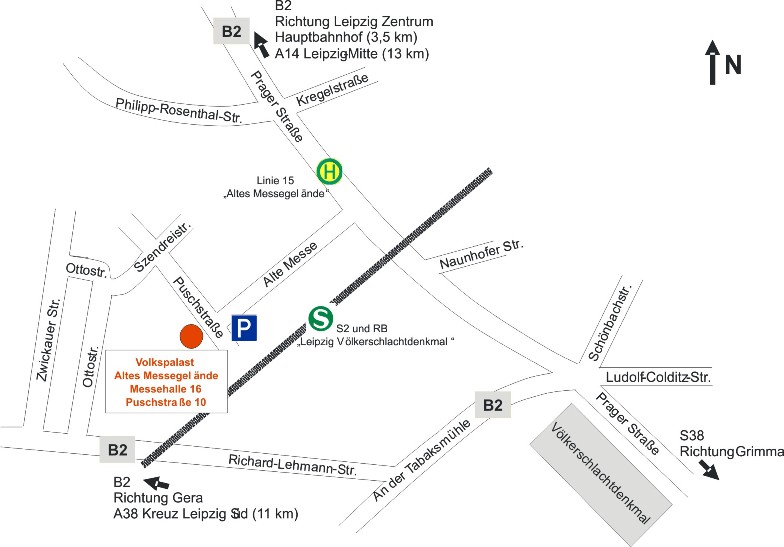
More info regarding this you can find under following Link: http://en.wikipedia.org/wiki/Monument_to_the_Battle_of_the_Nations
Source:
Wikimedia Foundation Inc.
Wikipedia / Titel: Monument to the battle of Nations/ URL: http://en.wikipedia.org/wiki/Monument_to_the_Battle_of_the_Nations (6. November 2012)
Gustav Adolf Memorial, Lützen / Leipzig
The Gustav Adolf monument at Lützen is part of a memorial that commemorates the Swedish king Gustav Adolf, who here died in the battle of Lützen 1632. It originally consisted of only a boulder of granite, which was set after the battle at the point where they found Gustav Adolfs corpse. 1833 designed by Karl Friedrich Schinkel, a cast-iron canopy, who came in 1837 to performance and since that time is covering the stone.On the16th of November 1632 King Gustav Adolf died in the battle of Lützen. He enjoyed high recognition in Brandenburg which was more Protestant oriented , but he belonged to the same religion. At the spot where they found his body after the battle, and later a granite boulder was placed, which should remind of him the "Sweden stone". After the Congress of Vienna in 1815 Lützen has become part of the Protestant Prussia. For the upcoming 200-year anniversary of the death of Gustav Adolf decided the Lützener magistrate to build a chapel above the stone Sweden. The Crown Prince and later King Friedrich Wilhelm IV, however, has been attracted to the project and prepared sketches by himself. He also commissioned Schinkel, also to submit a draft. First, a massive architecture has been considered, but Schinkel proposed an open iron monument, a canopy and vestibule. Schinkel's design was eventually executed without the apse. The monument was unveiled on 16 November 1837, on the 205 year anniversary of the death of Gustav Adolf .
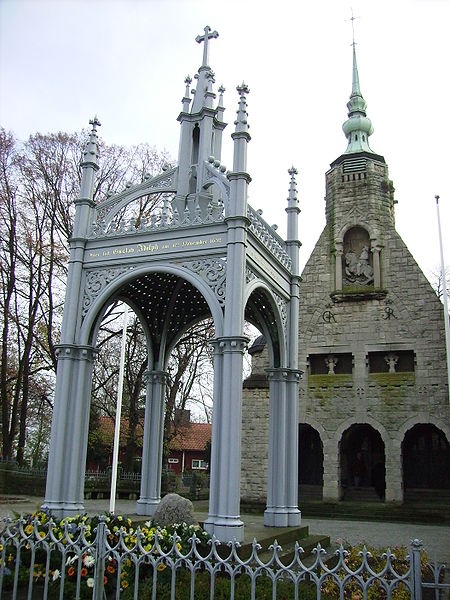
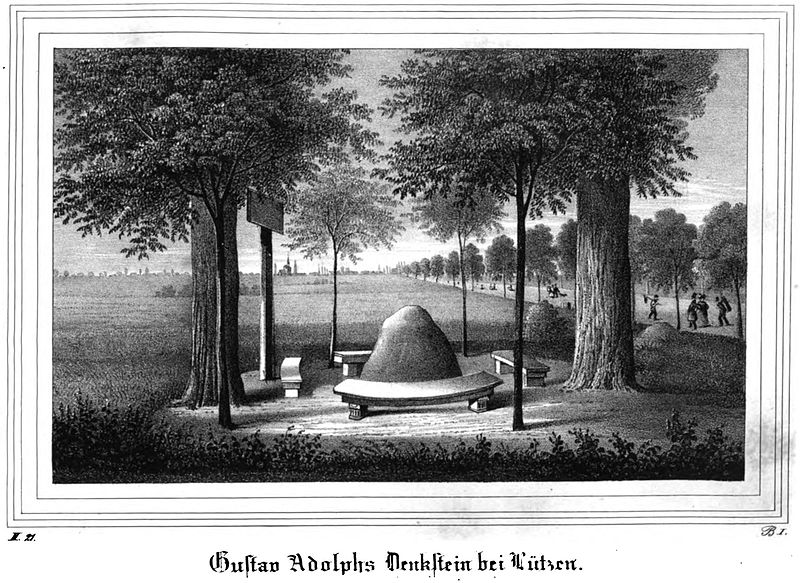
the original memorial stone (see right picture)
Battle near Lützen / Leipzig
After several attempts, Wallenstein, who avoided swedish troops in the north and thus threatened Swedish output bases of the allied Duchy of Saxony, in order to bring it to a battle, following it came to a battle on the 6th of November (jul. calendar) / 16th of November 1632 (greg. calendar) on a place who is called on the present -day Saxony-Anhalt. The actually moving army of Wallenstein which have been moving to the winter quarters has been located through the swedish troops . Wallenstein who had his troops hastily set up in the dark in battle order has been surprised by the swedish troops. This situation led him finally to the battle of Lützen.
In this battle, which took place not far from the old battlefield of Breitenfeld, the Swedish troops initially succeeded against the stubborn resistance of the Imperial, slowly gaining ground. Gustav II Adolf, as a military leader always took personal risks , but was killed in a cavalry attack, as the fog and smoke let him lost contact with his Småland riders as a result the swedish army has lost the conquered positions of the field again. Under the leadership of Bernard of Weimar it happened once again that the news of the death of the king led to insecurance of the soldiers, then fierce the soldiers to attack again thus the battle could be won – close. Studies at the armory of the Royal Palace located in Stockholm war clothing of the fallen King revealed that the targeted shot from an imperial rider happened on a close distance (no more than 6 m). The partially unclothed, robbed body was recovered on the battlefield and brought to Weissenfels into today's escort home. There he has been corpse preparated on the 17th of November 1632 by the pharmacist Casparus King also dissected and embalmed.
Gustav II. Adolf (Schweden) / URL: http://de.wikipedia.org/wiki/Gustav_II._Adolf_(Schweden)#Drei.C3.9Figj.C3.A4hriger_Krieg (1. Januar 2013)/ Translated to English from German
St. Thomas Church, Leipzig
The Thomaskirche (St. Thomas Church) is a Lutheran church in Leipzig, Germany. It is most famous as the place where Johann Sebastian Bach worked as a cantor, and as the current location of his remains.
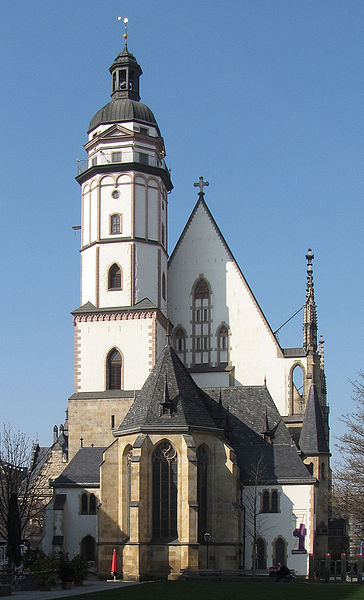
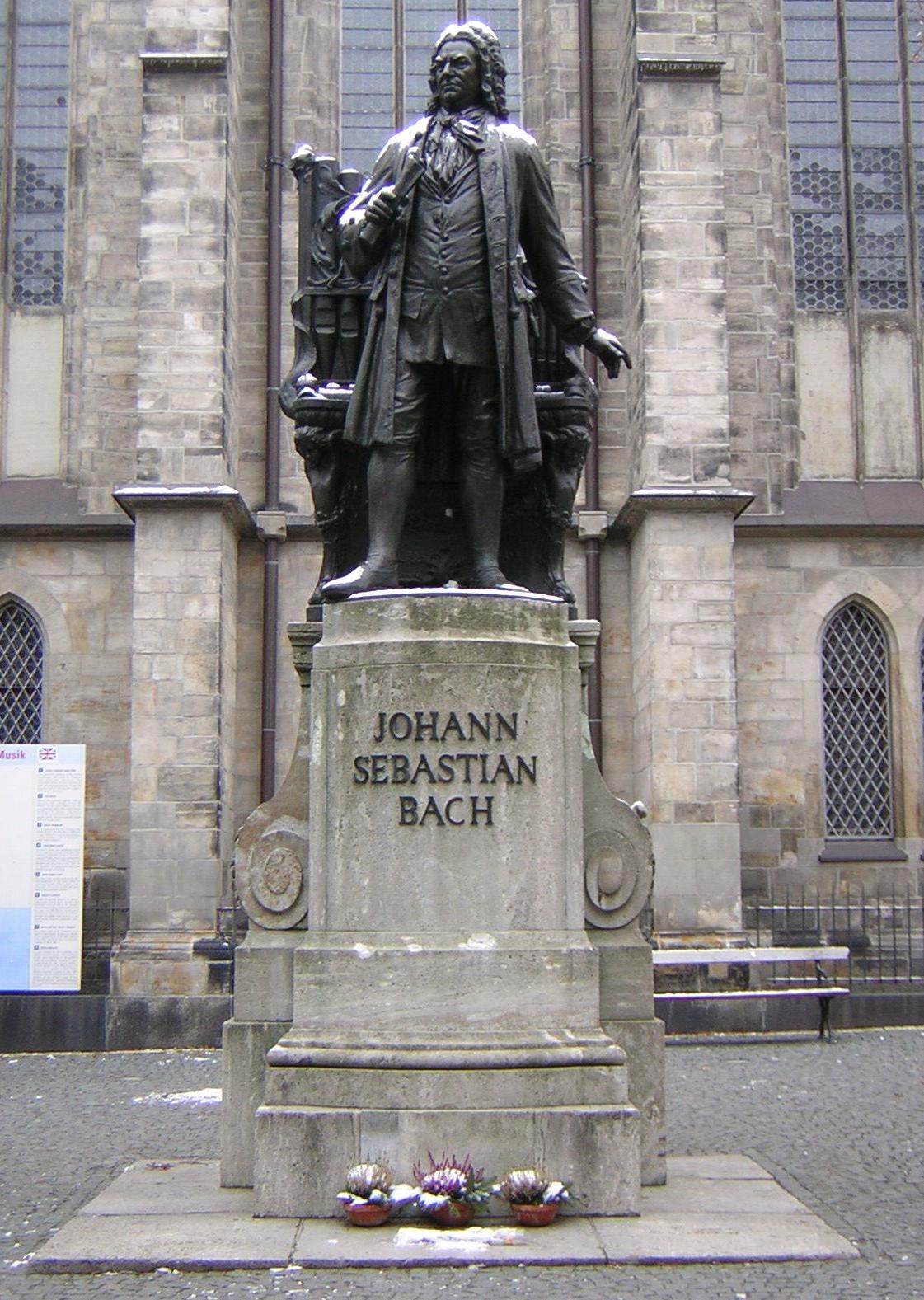
History
There has been a church at the current site of the Thomaskirche since the 12th century. Between 1212 and 1222 the preceding church became the new St. Thomas Monastery of the Augustinian order. In 1217, The Minnesinger, or troubador (see Minnesang), Heinrich von Morungen bequeathed to the church a relic of St. Thomas as he entered the order of canons after a trip to India. After several reconstructions (remains of an earlier Romanesque church were found during archaeological excavations), the current building, an example of late Gothic architecture, was consecrated by Thilo of Trotha, the Bishop of Merseburg, on April 10, 1496. The reformer Martin Luther preached here on Pentecost Sunday in 1539. Today, it is a Lutheran church.
The tower was first built in 1537 and reconstructed in 1702, leading to its current height of 68 meters.
Burials
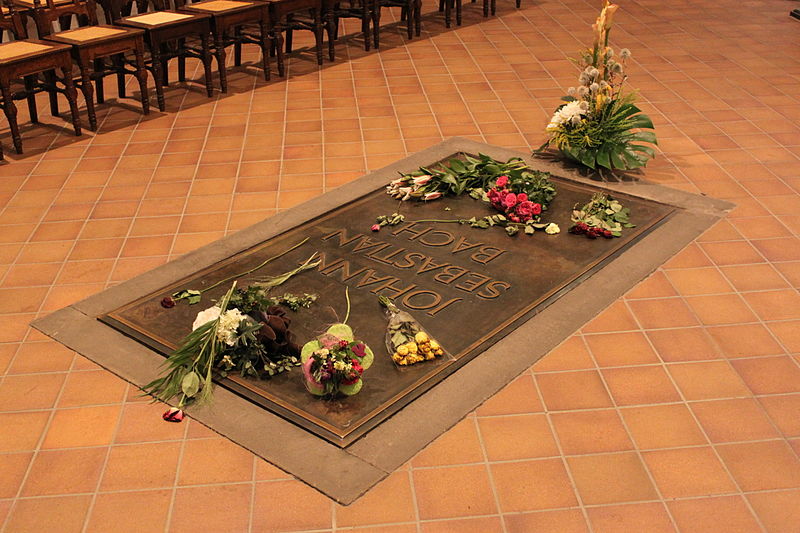
Bach's grave, St. Thomas' Church, Leipzig
Source: Wikimedia Foundation Inc.; Wikipedia / Titel:
St. Thomas Church, Leipzig / URL: http://en.wikipedia.org/wiki/St._Thomas_Church,_Leipzig (8th of December 2012)
Leipzig Bayerischer Bahnhof
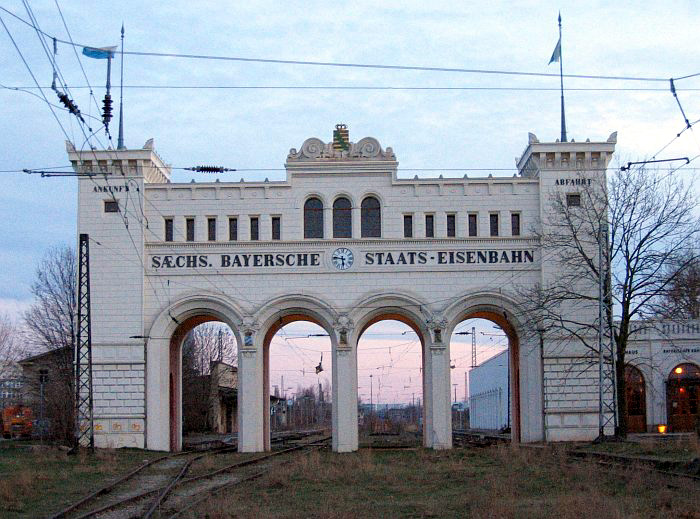
The Bayerischer Bahnhof (Bavarian station) in Leipzig is Germany's oldest preserved railway station. It was built in 1842 for the Leipzig–Hof line by the Saxon-Bavarian Railway Company (German: Sächsisch-Baierschen Eisenbahn-Compagnie), later taken over by the Royal Saxon State Railways (Königlich Sächsische Staatseisenbahnen) and operated as the Saxon-Bavarian State Railways (Sächsisch-Bayerische Staatseisenbahn).
The station was closed in 2001 for the construction of the Leipzig city tunnel. It is expected to re-open in 2013 after the completion of the tunnel, and will then be part of future S-Bahn Mitteldeutschland system.
The Bayerischer Bahnhof (Bavarian station) in Leipzig is Germany's oldest preserved railway station. It was built in 1842 for the Leipzig–Hof line by the Saxon-Bavarian Railway Company (German: Sächsisch-Baierschen Eisenbahn-Compagnie), later taken over by the Royal Saxon State Railways (Königlich Sächsische Staatseisenbahnen) and operated as the Saxon-Bavarian State Railways (Sächsisch-Bayerische Staatseisenbahn).
The station was closed in 2001 for the construction of the Leipzig city tunnel. It is expected to re-open in 2013 after the completion of the tunnel, and will then be part of future S-Bahn Mitteldeutschland system.
Bavarian Train Station
The Bavarian Railway Station was built in the years 1841 to 1844 and designed by the Leipzig architects CAE Pötzsch and served as the northern head station of the Saxon-Bavarian Railway. On the 18th of September 1842 it was still unfinished opened, as the end point of the route to Altenburg. The completion of the reception building was only on the 19th of September 1844. On the 7th of September 1883, the Bavarian railway station has been connected to the public transport network of the city of Leipzig with a tram line on the horse trams until 1897, then inverted to electric trams.
Since the 1st of October 1912 mostly quick and fast passenger trains were using on the LC route to Central Station, since the Bavarian railway station served only the local and freight and special trains for the trade fair. In particular, for these were at the Leipzig goods ring for trains approved routes.
According to the plans of architect Emil Fahrenkamp from 1939, the station had to give way for an an avenue. During the air strikes to Leipzig on the 4th of December 1943 and 20th of February 1944, the station was partially destroyed. During the portico and the west side of the building remained largely intact, the wooden concourse burned down, and the east side of the building had to be demolished later.
1952, the depot was closed.
Former platform area of south
Since the 2nd of October 1961 the station was electrified. By 1970 it should be shut down completely and without replacement. In 1972, the cargo handling was moved to Magdeburg-Thuringian railway station. By 1978 plans were made to convert parts of the station into a permanent exhibition facility. In a further step, a heritage railway between the station and the site of the Technical Fair should be established, which should be operated in the trade fairs and other special occasions. [2] In the mid 1980s, the interlockings were replaced using the existing buildings, monument protection laws kept you in the form of signals to the platform tracks. The portico was restored in 1991.The west side of the building are from the 19th July 2000 used by a Gose brewery, which also offers catering. [3]From early 2011 until May 2012 the portico was again restored externally. Among other things, it was found that the buildings were dilapidated than expected, so that the completion was delayed several times. On the 25th of May 2012, the completion of the renovation was celebrated with a ceremony. [4]
Source:
Wikimedia Foundation Inc.
Wikipedia / Titel: Leipzig Bayerischer Bahnhof
URL: http://de.wikipedia.org/wiki/Leipzig_Bayerischer_Bahnhof 23th of June 2013 / Translated to English from German
Auerbachs Cellar
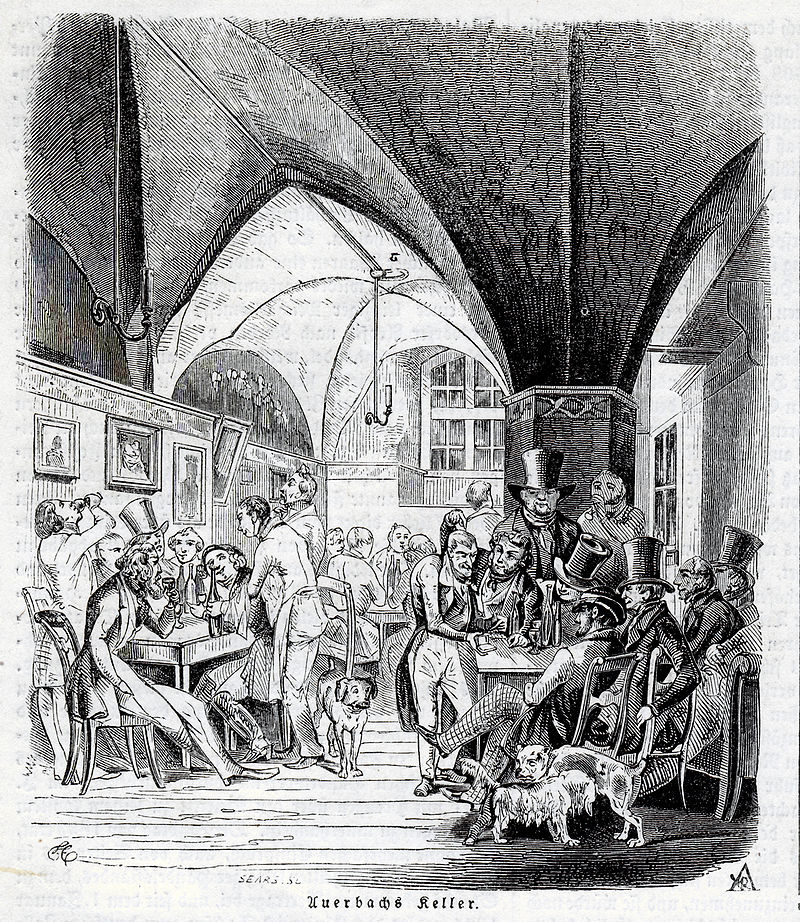
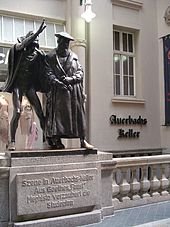
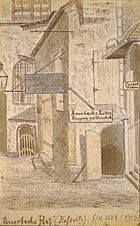
Auerbachs Keller (German pronunciation: [ˌaʊɐbaχs ˈkɛlɐ], Auerbach's Cellar in English) is the best known and second oldest restaurant in Leipzig, dating to at least the first half of the fifteenth century. It was already one of the city’s most important wine bars by the 16th century and is described in Johann Wolfgang von Goethe's play Faust I as the first place Mephistopheles takes Faust on their travels.
Auerbach's Cellar is located below the Mädlerpassage, a shopping arcade, at Grimmaische Straße 2 in Leipzig's historical district near the market. The restaurant has five historical dining rooms: the Fasskeller (Barrel Cellar),Lutherzimmer (Luther Room), Goethezimmer (Goethe Room), Alt-Leipzig (Old Leipzig), and, since 1913, the Großer Keller (Large Cellar). There is also the Mephisto Bar on the floor above available for drinks.
The wine bar was first mentioned in a historical record dated 1438. Its present name comes from the original owner, the Leipzig city councilor, professor of medicine and rector of Leipzig University Dr. Heinrich Stromer, who was familiarly called Dr. Auerbach after his birthplace, the town of Auerbach in Germany's Upper Palatinate region. He was the personal physician of the Prince-Elector of Saxony, who gave him the right to establish the wine bar in gratitude for faithful services.
Goethe often visited Auerbach’s Cellar while studying in Leipzig 1765-1768 and called it his favorite wine bar. He saw there two paintings on wood dating from 1625, one depicting the magician and astrologer Faust drinking with students and the other showing him riding out the door astride a wine barrel. Goethe was already familiar with the Faust legend from his youth, since a puppet show Dr. Faust, was frequently performed at local street fairs. The scene Auerbach’s Cellar in Leipzig in his drama Faust I is his literary memorial to his student tavern and to the city, albeit an ironic one. According to legend, the alchemist Dr. Johann Georg Faust once rode a wine barrel from the cellar to the street at Auerbach's Cellar, something he could have accomplished only with the help of the Devil.
A depiction of Auerbach’s Cellar from the Illustrierte Zeitung of 27 April 1844
Between 1912 and 1913 much of Auerbach’s Cellar was reconstructed and expanded as part of the demolition of the medieval construction above it and the erection of the Mädlerpassage. It was reopened on 22 February 1913, which is also the date when the two sculptures Mephisto and Faust and Bewitched Students were placed at the entrance of the wine bar. These were cast by Traugott Noack (1865–1941) at his Bronze Fine Art Foundry Noack, which he established in 1899.
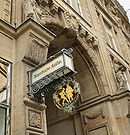
Auerbachs Keller sign

 Sightseeing in and around the City Leipzig / Leipzig Economic Location
Sightseeing in and around the City Leipzig / Leipzig Economic Location